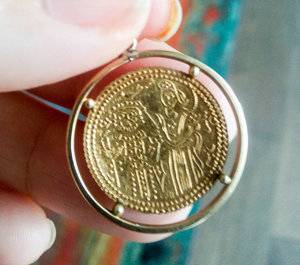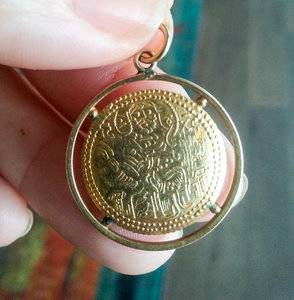- Joined
- Sep 23, 2017
- Messages
- 3,078
There's a thread on crosses but I thought it may be nice to have one on religious & spiritual jewelry more broadly.
@leukolenos Here is the medallion I was telling you about....gifted by my grandparents. Christ Pantocrator on one side and Sts. Constantine & Helen on the other. (so nice meeting you btw!)


@leukolenos Here is the medallion I was telling you about....gifted by my grandparents. Christ Pantocrator on one side and Sts. Constantine & Helen on the other. (so nice meeting you btw!)





300x240.png)